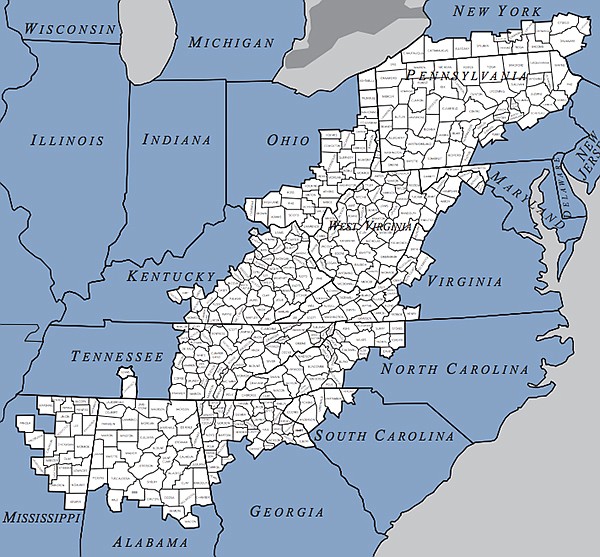MORGANTOWN, W.Va. (AP) - Four U.S. senators and the nonprofit Bipartisan Policy Center on Wednesday proposed 19 measures to boost the economy in Appalachia, including expanded broadband and telemedicine and tapping the region's "vast" natural gas reserves for chemical and advanced manufacturing facilities.
The initiative is intended to help reverse struggles with poverty and isolation in the 13-state region where more than 25 million people live. Other proposals include investments in highways and community water systems and education options like Pell Grants for older, non-traditional students.
The senators involved are Democrats Joe Manchin of West Virginia and Mark Warner of Virginia and Republicans David Perdue of Georgia and Thom Tillis of North Carolina. Appalachia has been disproportionately hurt by economic shifts and declines in coal mining and traditional manufacturing, they said in a preface to the report.
"With the right investments and smart policy, we can benefit from the energy transition now underway, as well as build and modernize transportation, water and sewer, and broadband infrastructure for the next century," Manchin said.
West Virginia, Ohio and Pennsylvania are now among the top 10 gas-producing states, the report said. It also noted the mountainous region's potential for harnessing wind power, federal research underway to extract rare earth elements from coal byproducts and ongoing development of "clean coal" carbon-capture technology that could be accelerated, commercialized and exported to nations like India and China.
Access to skilled workers is one barrier to more job creation in Appalachia, according to the report. It called for expanding federal programs that facilitate business partnerships to establish pipelines of trained workers and identifying the barriers that keep existing businesses from using them.
According to the report, national data show 65 to 70 percent of U.S. jobs require some education and training beyond high school, while 35 percent require a bachelor's degree at least. In Appalachia, 22.6 percent of its working-age people have those degrees, seven percentage points lower than the national average.
"Lifelong education and worker training - not just to get a job but to hold one - are key building blocks for sustainable economic development," Warner said.
The report called for accelerated pathways from public schools to community and technical colleges and universities that align with the economy's skill demands. Noting there are many sub-regions within Appalachia, some that have transformed local economies, it recommended they each establish teams to develop strategies.
More broadly, the report recommended more support and access to online training for growing industries and tax credits for companies to train and raise their employees' skill levels.
The three drivers of relatively poor health in Appalachia are chronic diseases, opioid addiction and shortages of health care professionals, the report said. It cited federal Appalachian Regional Commission support for health projects, called for better data and analysis on the effectiveness of treatments and interventions and "creative partnerships" among governments, nonprofits and private entities.

